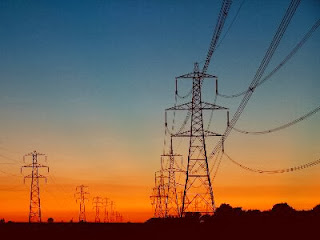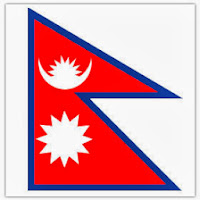Ministry of Home Affairs
Singhadurbar, Kathmandu,Nepal
Phone:+977-1-4211261,4211212,4211274,4211249,4211224
Fax:+977-1-4211264
Web: www.moha.gov.np
Ministry of Culture, Tourism and Civil Aviation
Singhadurbar, Kathmandu, Nepal
Phone:+977-1-4211992,4211669,4211846,4211847,4211711,4211685,4211825,4231196,4211909
Fax:+977-1-4211758
Email: info@tourism.gov.np, tourismnp@gmail.com
Web: www.tourism.gov.np
Ministry of Cooperatives and Poverty Alleviation
Singhadurbar, Kathmandu, Nepal
Phone:+977-1-4211860, 4211690, 4211576
Fax: +977-1-4211754
Ministry of Defense
Singhadurbar, Kathmandu,Nepal
Phone:+977-1-4211289
Fax:+977-1-4211294
Email: mod@mos.com.np
Web: www.mod.gov.np
Ministry of Education
Singhadurbar,Kathmandu,Nepal
Phone:+977-1-4200340,4200390
Fax:+977-1-4200375
Web: www.moe.gov.np
Ministry of Finance
Singhadurbar,Kathmandu,Nepal
Phone:+977-1-4211412, 4211338
Email: admindivision@mof.gov.np
Web: www.mof.gov.np
Ministry of Foreign Affairs
Singhadurbar,Kathmandu,Nepal
Phone:+977-1-4200182,4200183,4200184,4200185,4200186
Fax:+977-1-4200160
Web: www.mofa.gov.np
Ministry of Forests and Soil Conservation
Singhadurbar, Kathmandu,Nepal
Phone:+977-1-4211567
Fax:+977-1-4223868
Email: info@mfsc.gov.np, webmaster@mfsc.gov.np
Web: www.mfsc.gov.np
Ministry of General Administration
Singhadurbar, Kathmandu,Nepal
Phone:+977-1-4245367,4245368,4245369
Fax:+977-1-4242138
Web: www.moga.gov.np
Ministry of Health and Population
Ramshah Path, Kathmandu,Nepal
Phone:+977-1-4262802, 4262543
Fax:+977-1-4262896,4262468, 4262935
Web: www.mohp.gov.np
Ministry of Agriculture Development
Singhadurbar, Kathmandu,Nepal
Phone:+977-1-4211706,4211950,4211981
Fax:+977-1-4211935,4211839
Email: memoac@moac.gov.np
Web: www.moad.gov.np
Ministry of Commerce and Supplies
Singhadurbar, Kathmandu,Nepal
Phone:+977-1-4230967, 4246246,4226686
Fax:+977-1-4220319, 4225594
Email: moc@wlink.com.np
Ministry of Information & Communication
Singhadurbar, Kathmandu,Nepal
Phone:+977-1-4211556,4211647, 4211615,4211728
Fax:+977-1-4211979, 4211729, 4211610
Email: moichmg@ntc.net.np, moicgon@ntc.net.np
Web: www.moic.gov.np
Ministry of Labour & Employment
Singhadurbar, Kathmandu,Nepal
Phone:+977-1-4211889,4211991
Fax:+977-1-4211877
Email: info@moltm.gov.np
Web: www.moltm.gov.np
Ministry of Land, Reform and Management
Singhadurbar, Kathmandu,Nepal
Phone:+977-1-4211666
Fax:+977-1-4211708
Email: lrm@most.gov.np
Web: www.molrm.gov.np
Ministry of Law, Justice, Constituent Assembly & Parliamentary Affairs
Singhadurbar,Kathmandu,Nepal
Phone:+977-1-4211987, 4211786, 4211702, 4200225,4211872, 4211633
Fax : 01-4211684
Email : info@moljpa.gov.np
Website: http://www.moljpa.gov.np/
Ministry of Physical Infrastructure and Transport
Singhadurbar, Kathmandu, Nepal
Phone:+977-1-4211782,4211931,4211732,4211655
Fax:+977-1-4211720
EMail: info@moppw.gov.np
Website: http://www.moppw.gov.np/
Ministry of Federal Affairs and Local Development
Singhadurbar, Kathmandu,Nepal
Phone:+977-1-4200000,4200309
Fax:+977-1-4200318
Email: ipd@mofald.gov.np
Ministry of Science, Technology and Environment
Singhadurbar, Kathmandu,Nepal
Phone:+977-1-4211661,4211641,4211586,4211737,4211869,4211641,4211996
Fax:+977-1-4211954
Email: info@moste.gov.np
Web: www.moste.gov.np
Ministry of Energy
Singhadurbar, Kathmandu,Nepal
Phone:+977-1-4211516
Fax:+977-1-4211510
Email: info@moen.gov.np
Web: www.moen.gov.np
Ministry of Women, Children and Social Welfare
Singhadurbar, Kathmandu,Nepal
Email: mowcsw@ntc.net.np
Web: www.mowcsw.gov.np
Ministry of Peace and Reconstruction
Singhadurbar, Kathmandu,Nepal
Phone:+977-1-4200272, 4211089, 4211550, 4211189
Fax: +977-1-4200020, 4211173
Email: info@peace.gov.np
Web: www.peace.gov.np
Ministry of Industry
Singhadurbar, Kathmandu,Nepal
Email: info@moi.gov.np
Web: www.moi.gov.np
Ministry of Federal Affairs, Constituent Assembly , Parliamentary Affairs and Culture
Singhadurbar, Kathmandu,Nepal
Phone:+977-1-4211628
Fax:+977-1-4211792
Ministry of Irrigation
Singhadurbar, Kathmandu,Nepal
Phone:+977-1-4211426
Fax:+977-1-4200026
Email: info@moir.gov.np
Web: www.moir.gov.np
Ministry of Youth and Sports
Kamalpokhari, Kathmandu,Nepal
Phone:+977-1- 4416788
Fax:+977-1-4416489
Email: info@moys.gov.np
Web: www.moys.gov.np




























